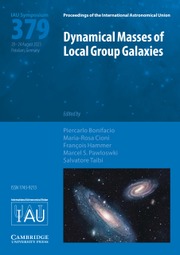No CrossRef data available.
Article contents
Constraints on the dark matter distribution in dwarf spheroidal galaxies based on the 4th-order Jeans analysis
Published online by Cambridge University Press: 30 October 2025
Abstract
The mass-anisotropy degeneracy is still one of the main issues in estimating the dark matter distribution in galaxies, especially for the commonly used 2nd-order Jeans analysis. We study the extension of spherical Jeans modeling by incorporating the 4th-order velocity moments under the assumption of dynamical equilibrium and a constant velocity anisotropy. Incorporating 4th -order moments allows stars’ line-of-sight velocity distribution (LOSVD), which is sensitive to the value of β, to be flexible, covering thin-tailed to heavy-tailed distributions that are inaccessible if only 2nd-order moments are used. We test our stellar dynamical modeling using mock data that resembles Draco dSph with either central NFW cusp or Burkert core. Using 500 sample stars, our simulations show that incorporating 4th-order moments improves the results. Typically, the velocity anisotropy is constrained ∼ 2 −3 times tighter, while it is ≲30% typical bias for the constraint of the dark matter inner density slope with both parameters being recovered within 1σ uncertainties.
Information
- Type
- Poster Paper
- Information
- Proceedings of the International Astronomical Union , Volume 19 , Symposium S379: Dynamical Masses of Local Group Galaxies , December 2023 , pp. 38 - 42
- Copyright
- © The Author(s), 2025. Published by Cambridge University Press on behalf of International Astronomical Union


